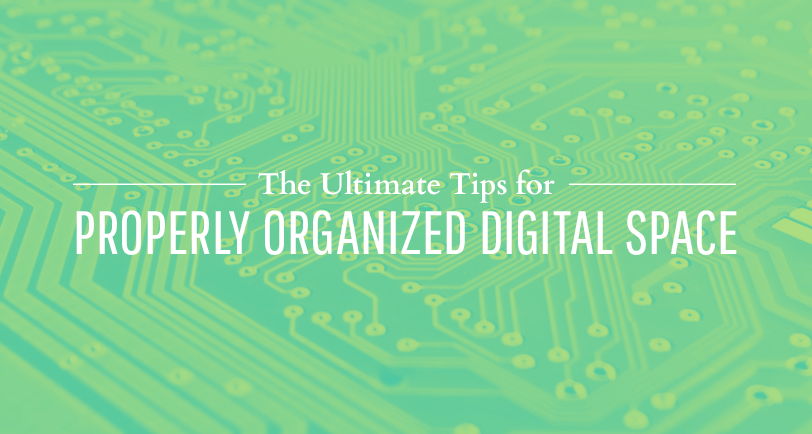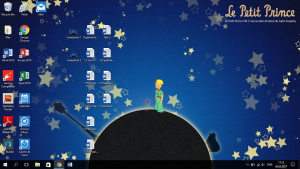
Guest blogger Mary Kleim talks about how to properly organize and optimize your digital work space.
Close your eyes and imagine the perfect office. It’s clean, spacious, with tons of light and fresh air. Such an office would instantly put you in a productive mode, right? Now, think about your digital files. You haven’t been discarding and organizing files as you made progress through them, and you created tons of them over the past few months or years. Now you have a mess. It’s not the beneficial creative mess; it’s just one hot mess.
You have one or more computers, a tablet, a smartphone, and a cloud. There are files stored everywhere. Some of them are duplicates, to make things worse. Why are you keeping them? Is it because you’ll really need them, or you just play by the good old rule called just in case? If you really need them, how will you find them in all that mess?
Today, we’ll focus on a very important aspect of your efficiency: decluttering and organizing your digital space.
Why Should You Get Your Digital Space Under Control?
Most of you have a question: “why should I bother?” I’m fine with my files, clouds, and devices.
Whether it’s your office, desk, or computer, added things lead to confusion, which makes you unfocused and unable to process information with your full potential.
These are the findings from a research study from the Princeton University Neuroscience Institute: “Multiple stimuli present in the visual field at the same time compete for neural representation by mutually suppressing their evoked activity throughout visual cortex, providing a neural correlate for the limited processing capacity of the visual system.”
Let’s put that in simple words: when your desktop is a mess of folders and files, you’ll waste more time looking for the one you need. When it’s sleekly organized in few folders with relevant subfolders, your mind will be focused and faster.
If we were talking about clutter in your office, the tips would’ve been simple: get rid of everything you don’t need, organize the things you need in small storage spaces, and maintain the order. Can we apply those tips to the needs of a developer, designer, or freelancer?
How to Organize Your Digital Space
Declutter: Remove Unnecessary Files
Why would you even try organizing the files you don’t need? The photos you’ve already shared on Instagram? Delete them from your phone. All those meals you photographed with the intention to organize into a cookbook? You don’t really need them.
It’s important to keep your devices clean, with only the necessary files and programs on them. That’s how you keep them fast and functional. Your computer doesn’t like the clutter, so it’s time to start respecting that preference.
Start by searching for duplicate files. You can use a service like Duplicate Cleaner or dupeGuru to do that.
What about all those projects you completed as a freelancer five years ago? If you can’t let go, keep all those old files on a separate external hard disk. Storing them on the cloud also works. If you have tons of documents, sheets, slides and forms, then a Google Doc is a great option. Delete all apps you don’t need. Do you have Windows 10? Then you also have tons of apps you’re not even aware of. In fact, we all have such apps and programs, no matter what system we use. We installed them because a blogger recommended them, but we didn’t even get to try them out. Clean the clutter!
The Hard Part: Organizing
Mary Kleim, a digital marketing expert at AssignmentMasters.co.uk, explains that decluttering is not enough: “Sure, minimalism is great and all, but what happens when you need to keep many files on your computer, an external hard disk or the cloud? We need a system that helps us find the thing we’re looking for. Personally, I like to organize my documents by project. I have a separate folder for each project. If I have two or more projects for the same client, I create a larger folder with subfolders. I usually know where the file I’m searching for came from, so I go directly to that project and I locate it. It’s that easy.”
Start with the major folders. Create them for documents, videos, music, photos, eBooks, games, and all other important categories.
Create subfolders. The Documents folder can contain subfolders for all your projects. The project subfolders will have their own subfolders organized by type of files, theme, or date. Create your own system that allows you to find what you need the moment you think of it. Use the same system to organize the files on your computer, all other devices, and the cloud.
Maintain the Order
Are you cluttering the desktop with daily files? Why don’t you just decide if you need the file right after completing it? If the answer is yes, then you’ll immediately store it in the relevant folder. It’s important to have a clean digital space that will keep your eyes and mind focused. Here are two examples of a desktop. Which one is easier to handle? You be the judge.
Or:
Remember: digital clutter affects your work. Maybe all it takes is a thorough spring cleaning for you to get more organized and productive in your work. Do it today!
Author’s bio 
Mary Kleim is a creative writer. She in working as a digital marketing expert. Her main project is AssignmentMasters. Also, she is writing guest posts to different blogs and working on her own project dedicated to time-management.







